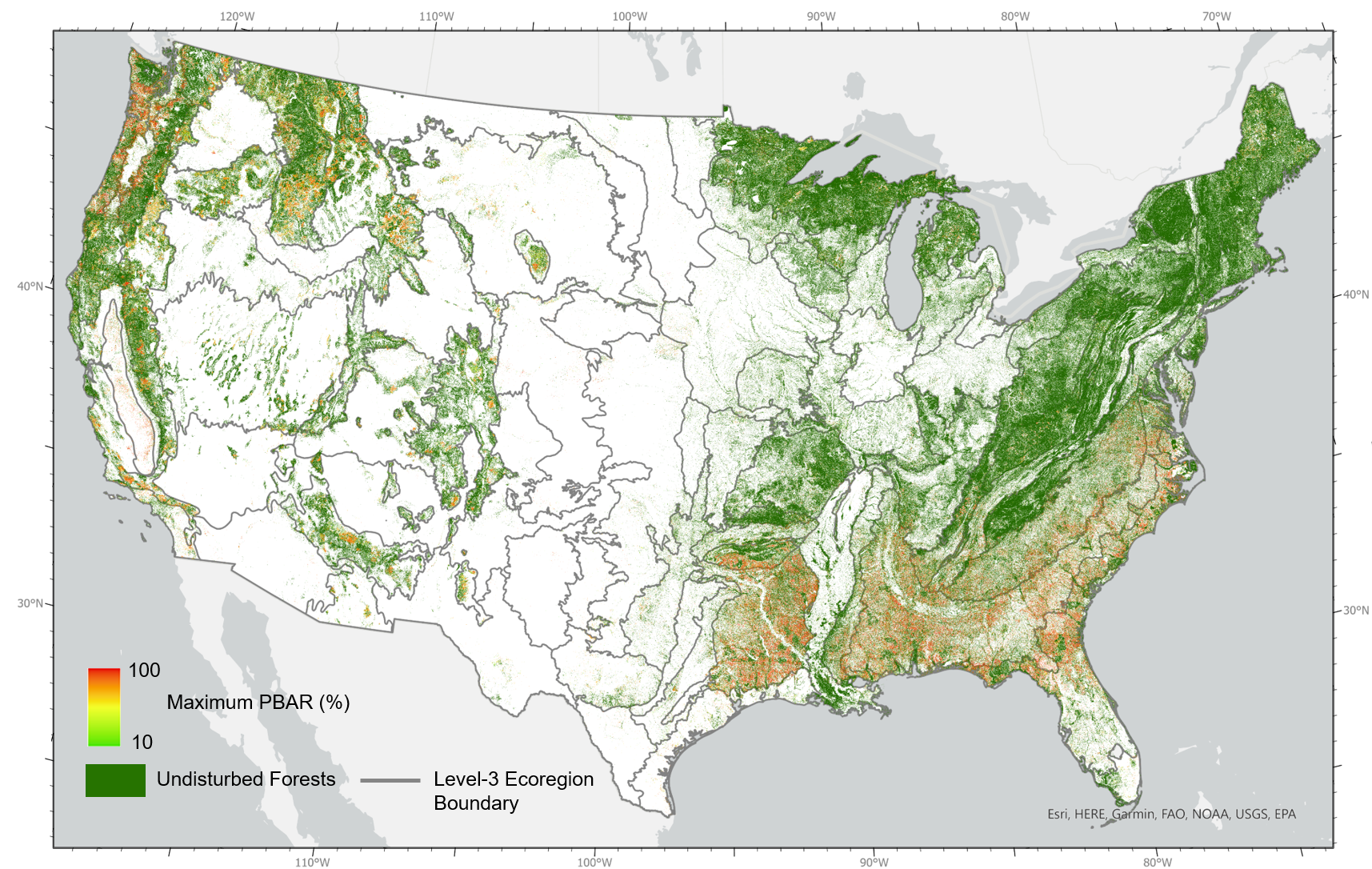GEOG researchers Jiaming Lu, Dr. Chengquan Huang, Dr. Weishu Gong, along with GEOG alumni Dr. Xin Tao (University at Buffalo, SUNY) and Dr. Karen Schleeweis (USFS Rocky Mountain Research Station) recently published a paper entitled “ Annual forest disturbance intensity mapped using Landsat Time Series and field inventory data for the Coterminous United States (1986-2015,” in Remote Sensing of Environment.
In the study, the authors produced the first set of annual forest disturbance intensity map products quantifying the percentage of basal area removal (PBAR) at the 30-m resolution for the conterminous United States (CONUS) from 1986 to 2015. The derived map products revealed that during the 30-year study period, the annual average PBAR values of all disturbed pixels across CONUS ranged from 66% to 70%, and the proportion of those pixels having stand-clearing disturbances ranged from 40% to 58%. High disturbance intensities were concentrated in the Southeastern states from Texas to Virginia and along the Pacific coast and the Cascades in the West. At the national scale, the annual mean PBAR and proportion of stand clearing area (PSCA) values both appeared to follow second order trajectories, with increasing trends at the beginning, decreasing trends towards the end, and turning points around 2003. Overall, there is a net increase of 2% in PBAR and 3% in PSCA from 1986 to 2015. The temporal trends of PBAR and PSCA were also investigated at state and ecoregion levels, with substantial differences found among many states and ecoregions.
Compared to other published disturbance products, the maps derived through this study can provide the unique intensity information on forest disturbances, details that are critical for understanding forest dynamics across CONUS over multiple decades. The temporal dynamics of disturbance intensity revealed by these map products may shed light on different practices and processes causing basal area loss across different regions.
The full paper can be accessed here.
The map product is now available from a web portal of the Oak Ridge National Laboratory Distributed Active Archive Center (ORNL-DAAC) here.


